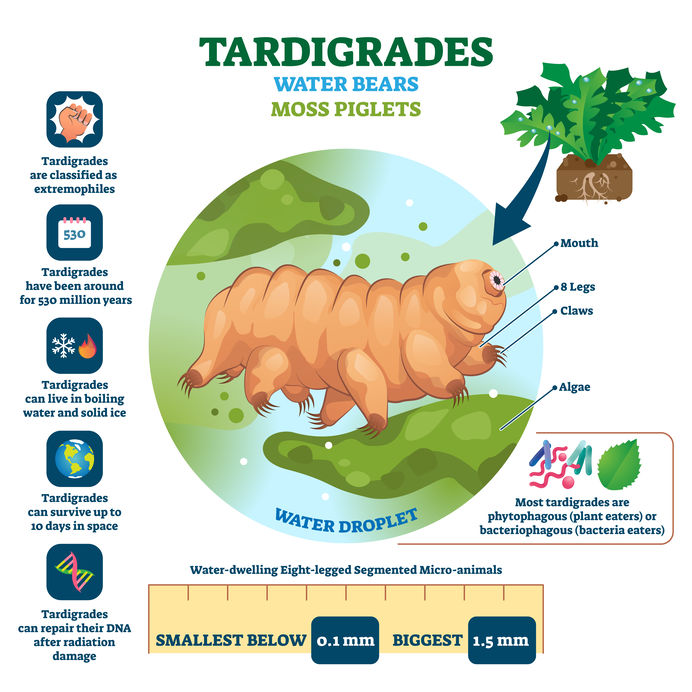Water Bears are tardigrades, these tiny animals are almost microscopic with long, chubby bodies, eight legs and hands with claws. They are extremophile because they are almost indestructible and can even survive in extreme environments.

Water Bears have been around for 600 million years and there are around 1,300 species of found around the world. They are generally considered to be aquatic animals because they require a thin layer of water around their bodies to prevent dehydration. However they have also been found in other environments including the deep sea and sand dunes. Freshwater mosses and lichens are their preferred habitat, which gives them their other nickname; moss piglet.
Extremophiles
Extremophiles are organisms that live in “extreme environments,” under high pressure and temperature. Water Bears can withstand temperatures from -200 °C to 151 °C, lack of water and oxygen, 6000 atmospheres of pressure and a thousand times the radiation we can take.
They can even survive the frozen vacuum of space. Part of their ability to survive extreme conditions is due to a unique protein in their bodies that protects their DNA.
They survive in these extreme environments by undergoing a process called cryptobiosis. This metabolic state is triggered in response to adverse environmental conditions such as desiccation, freezing, and oxygen deficiency. In the cryptobiotic state, measurable metabolic processes are reduced to 0.01% or normal.
Make Water Bears your new favourite micro organisim

